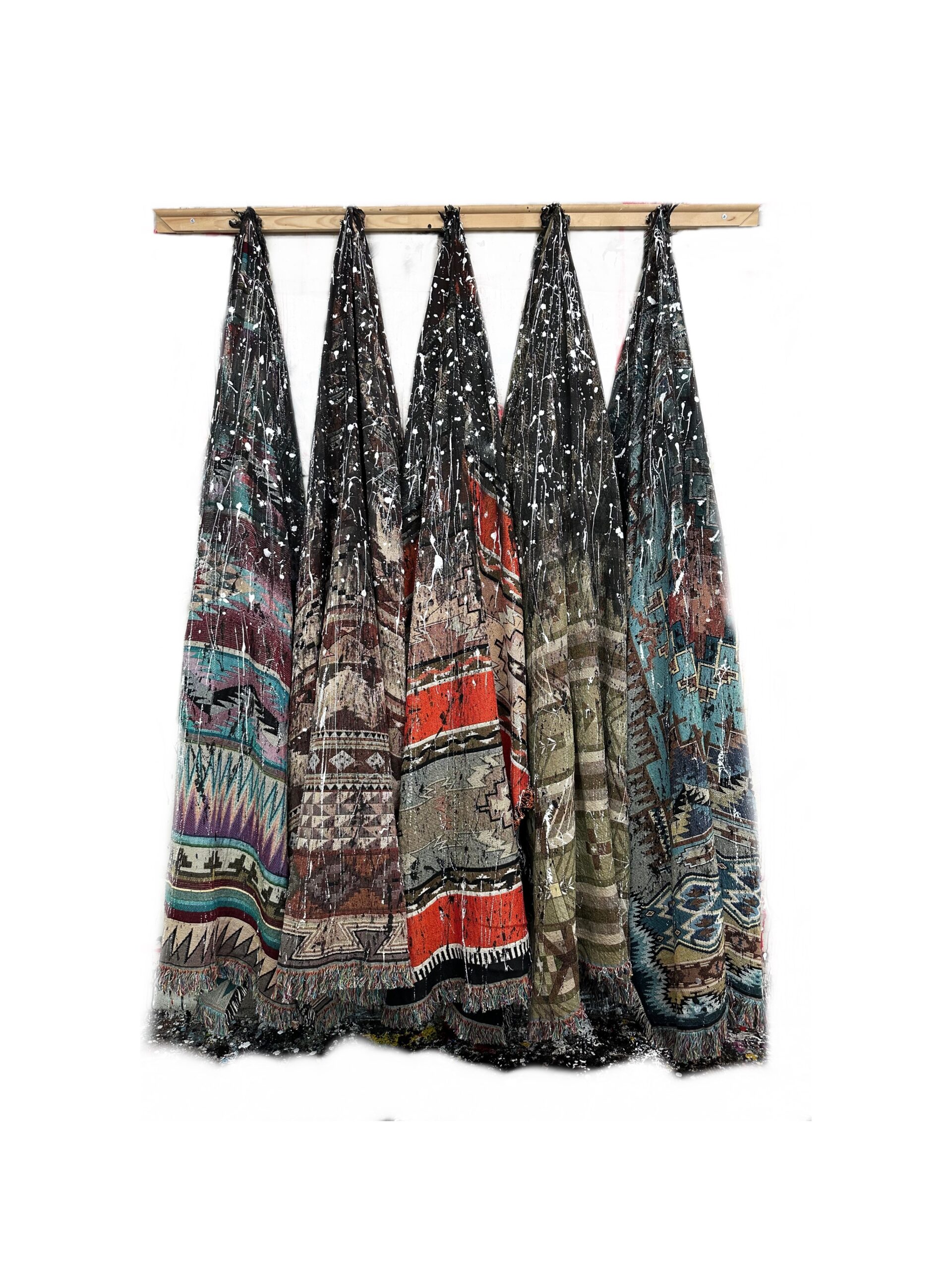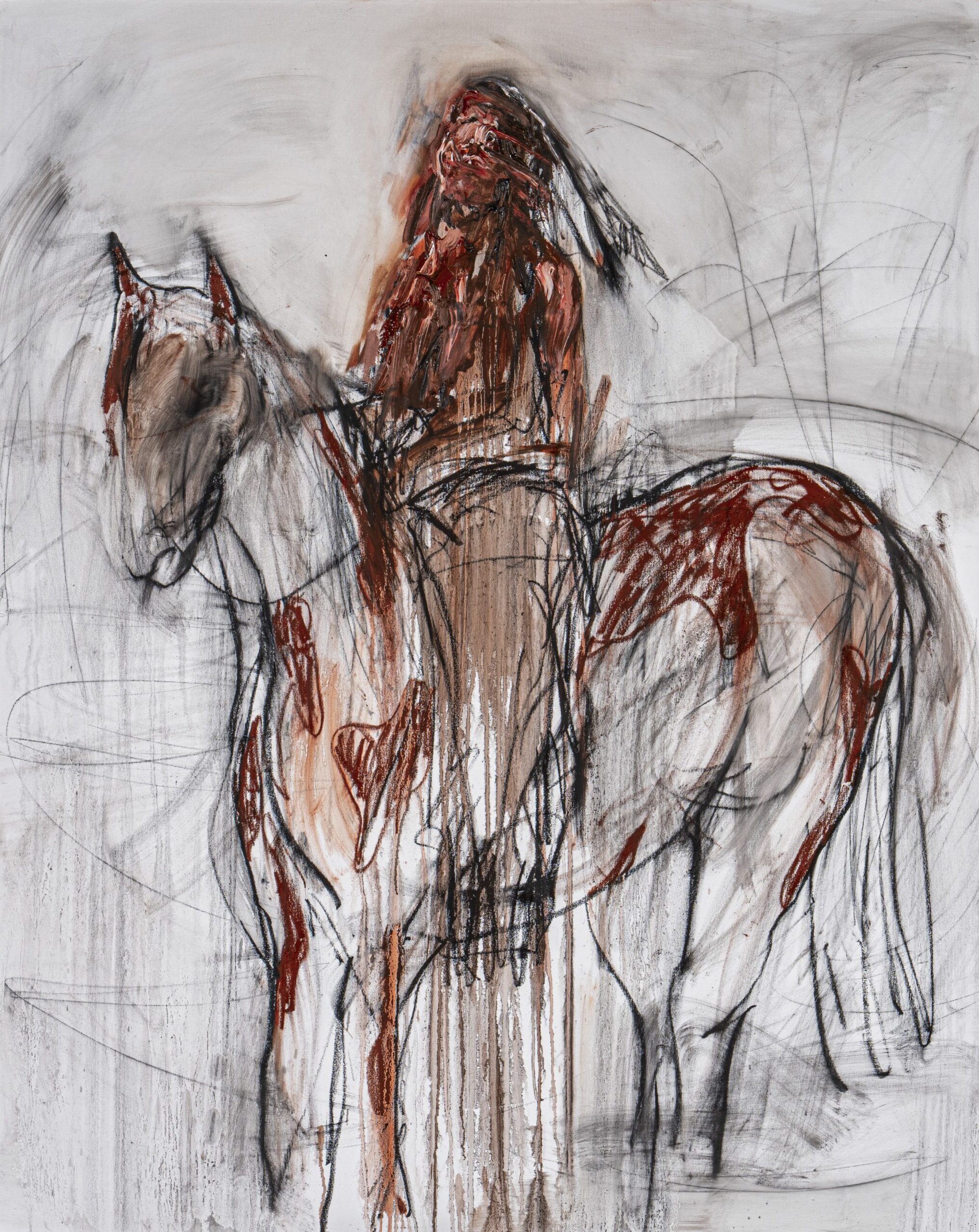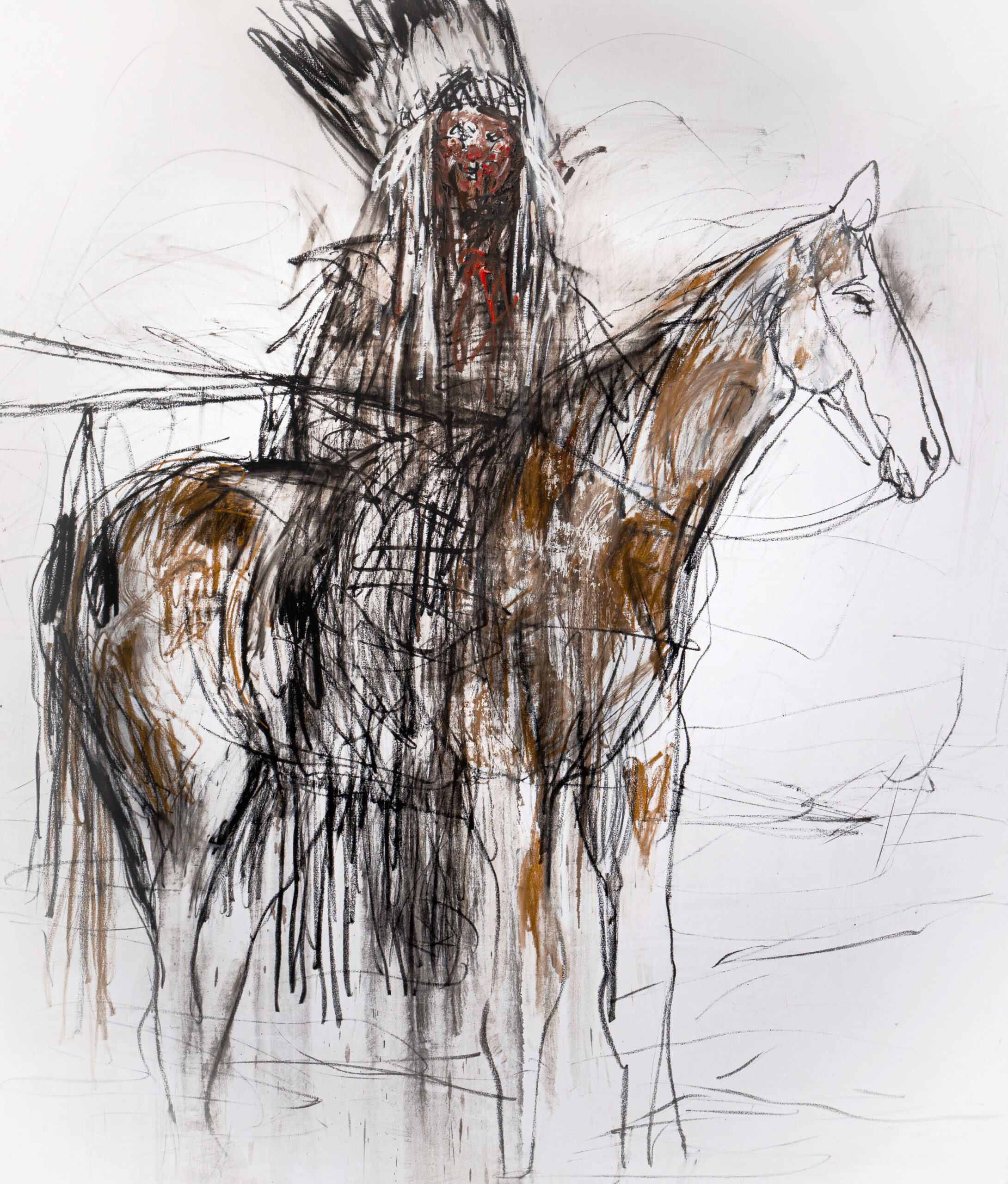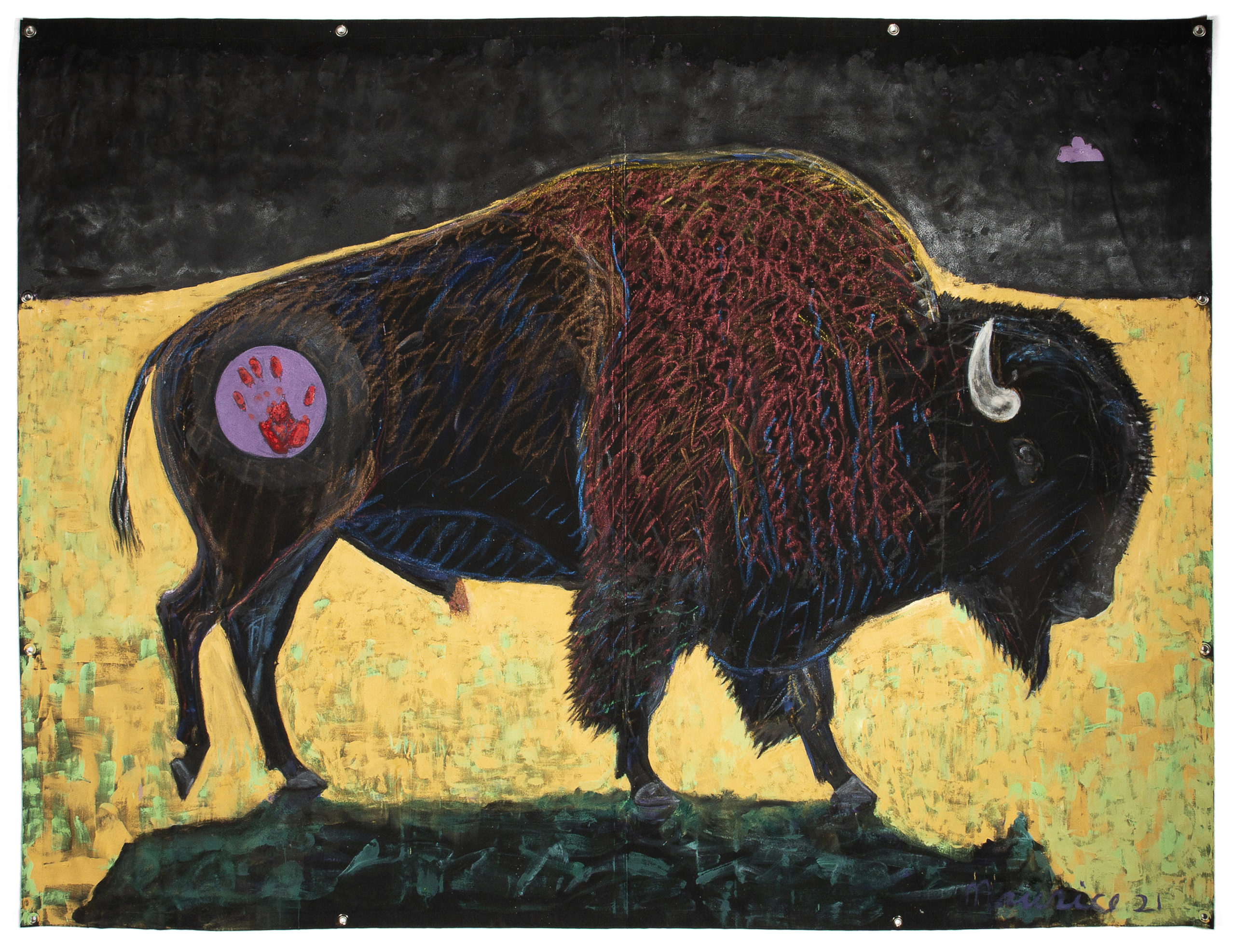Evan Feldman
Director
efeldman@gpgallery.com
Featuring the work of Maurice Burns, Andrew John Cecil, Patrick Dean Hubbell, and David Levinthal the exhibition merges four poignant realities: exploration of climate change, failed enterprise and loss of cultural heritage, contrasted with an outlook for hope, transformation, beauty and external longevity.
A MacDowell fellow and Pollock-Krasner award recipient, Maurice Burns weaves together ideas and iconography from the Harlem Renaissance, Pop Art, and the School of London in pursuit of a cultural territory unbound by 20th-century conceptions of racial identity and the conventions of high culture. As Burns remixes art history and pop culture on his postmodern canvases, a distinctly personal imaginary emerges––one as complex and uncompromising as the jazz legends, Native American chiefs, mathematicians, and everyday people who populate his world.
Andrew John Cecil has devoted more than 30 years of his life to working in the fields of visual art and cultural heritage. Cecil received an MFA in sculpture from Cranbrook Academy of Art in 1989. After graduation Cecil returned to the West to continue his work in the studio and to raise his family. Cecil’s knowledge and understanding of cultural heritage as well as his own sculptural expression shared in museums and galleries, provide for a dynamic exchange between his work as both a contemporary sculptor and curator.
Growing up in the American West, Cecil spent his formative years in Kalispell Montana. His family’s deep connection to the land, industry and people of this vast and traditionally complex region informs what Cecil creates in the studio. His work often depicts a contemporary narrative about the American West, giant tools, iron trucks, fence lines, irrigation gates, and spent toolboxes. These icons of a passed agricultural and industrial century speak to a lost innocence, a failed cultural notion of a bountiful landscape with limitless resources. Cecil strives with his work to challenge our relationships with one another and land stewardship in the American West today.
Patrick Dean Hubbell (Diné) is an Indigenous artist, living and working on the Diné Nation. Hubbell’s early approach to painting built upon gestural abstraction. Incorporating Diné philosophy and contemporary western aesthetics and ideologies, his large-scale canvases were characterized by expressive brushwork and the inclusion of Navajo geometric designs.
Continuing his exploration of abstraction through the lenses of both modern and Indigenous art, Hubbell began reconstructing the canvas in reference to textile, shawl, blanket and medicine bags. Unencumbered by stretcher bars, Hubbell would cut, fold and collage loose canvases. The resulting works transformed his medium and the context in which it is viewed. In his most recent series, Hubbell interrogates biases about Native peoples and histories of the American West, puncturing romanticizing imagery by deconstructing it. His blind contour portraits reveal the clichéd cowboy hats and warbonnets of nineteenth-century paintings produced by the likes of George Catlin, Frederic Remington, and Charles M. Russell, albeit reduced to faint yet eminently recognizable core imagery, indicating just how deeply such stereotypes have been internalized by Native and non-Native audiences alike.
Hubbell received his BFA in 2010 from Arizona State University and his MFA in 2021 from the Art Institute of Chicago. His work has been exhibited at the Heard Museum, Phoenix, AZ; The Autry Museum of the West, Los Angeles; Rochester Contemporary Art Center, Rochester, NY; Utah Museum of Contemporary Art, Salt Lake City, Utah. Hubbell’s work is in the collections of the Denver Art Museum, Denver, CO and the Perez Art Museum, Miami, FL. In 2017, the artist was awarded a prestigious Pollock-Krasner grant.
Since the early 1970’s, David Levinthal’s work has been a touchstone for conversations about theories of representation in photography and contemporary art as he has investigated the overlapping of popular imagery with personal fantasy through all of his major series including Hitler Moves East, Modern Romance, Wild West, Desire, Barbie, Baseball, and History. In 2018, the George Eastman Museum presented David Levinthal: War, Myth, Desire, the largest retrospective of his work to date accompanied by the most comprehensive publication ever produced on his work. He has received a National Endowment for the Arts Fellowship and a Guggenheim Fellowship. His work is exhibited widely and part of the permanent collections of the Museum of Modern Art, Museum of Fine Arts Houston, the Whitney Museum of American Art, San Francisco Museum of Modern Art, Carnegie Museum of Art, The Menil Collection, Los Angeles County Museum of Art, Smithsonian American Art Museum, and the Metropolitan Museum of Art.

Patrick Dean Hubbell
Cobalt Tumbleweed 2022
Oil, Acrylic, oil pastel, enamel, plastic toy figurines, repurposed ranch rope frame
25 x 25 x 1 1/2 inches

Patrick Dean Hubbell
Within The Darkness, The Stars In The Night Sky Came To Reclaim Their Stories and Their Songs 2023
Oil, Acrylic, Enamel, Synthetic Mass Manufactured Textile, Wood Stretcher Bar
84 x 48 inches

Patrick Dean Hubbell
Not Your Subject: American Western Art 2023
oil, oil stick, charcoal on canvas
60 x 48 inches

Patrick Dean Hubbell
American Western Art: It's Your Time To Be Let Out To Pasture 2023
oil, oil stick, charcoal on canvas
84 x 72 inches

You Balance All from the Earth to the Sky 2021
Oil, acrylic, natural earth pigment on canvas
80 x 66 x 1 1/2 inches

Chahaałeeł: Your Darkness Balances the New Light 2022
oil, natural earth pigment on canvas
48 x 60 x 1 1/2 inches












